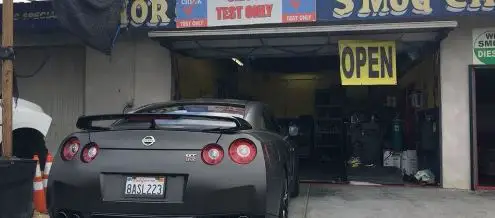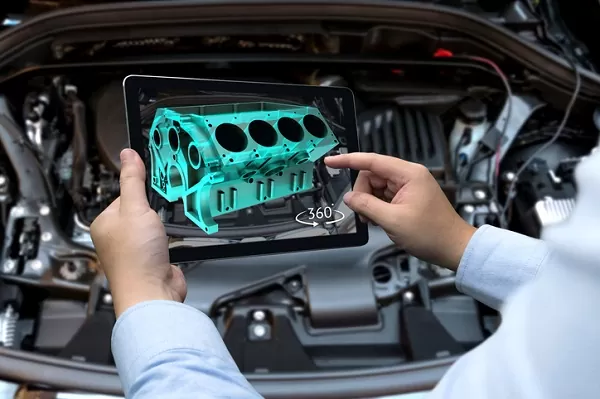If you live in a state that requires smog check certificates, then you know just how important it is to have your car tested regularly. But how long does a smog check take? What is involved in the process? In this blog post, we will answer all of your questions about smog tests and provide some valuable tips on how to prepare for your vehicle’s test.
Lets take a look!
What Is A Smog Test?
A smog test is conducted in order to determine the level of pollution emitted by a car. The test is usually performed at a certified testing center, and may be required in some states in order to renew a vehicle’s registration.
There are two main types of smog tests: visual inspections and tailpipe tests. During a visual inspection, an inspector looks for evidence of tampering with the car’s emission control system. This could include missing or damaged parts, or modifications that would bypass the system.
The tailpipe test is used to measure the actual emissions coming from the car’s exhaust pipe. A vehicle that fails either type of smog test will need to be repaired before it can be retested. Depending on the severity of the problem, this could mean making simple adjustments to the car, or completely replacing the engine.
Smog tests are important in helping to keep our air clean. By ensuring that cars are running properly, we can help reduce the amount of pollution being released into the atmosphere.
Which States Require A Smog Test Certificate?
Some of the states that have this requirement include:
- California
- Colorado
- Connecticut
- Delaware
- Hawaii
- Illinois
- Maryland
- Massachusetts
- Nevada
- New Hampshire
- New Jersey
- New Mexico
- New York
- Oregon
- Pennsylvania
- Rhode Island
- Vermont
- Washington
If you live in one of these states, be sure to check with your local DMV to find out what the requirements are for smog tests. You may need to get your car tested every year, or every two years depending on the state’s regulations.
What Are The Steps Involved In Getting A Car Smog Tested?
The first step is to find a certified smog test center. You can typically find these centers by searching online, or by asking friends or family for recommendations. Once you’ve found a few potential testing centers, be sure to call and ask about their rates and availability.
When you arrive at the testing center, the staff will usually inspect your car’s engine and emissions system to make sure everything is in working order. They may also check the vehicle’s registration to ensure that it is up to date.
Next, the car will be connected to a machine that measures the emissions coming from the exhaust pipe. The tester will then start the car and let it run for a few minutes while monitoring the readings.
Once the test is complete, the results will be printed out and given to you. If your car passes, you’ll simply need to pay the testing fee and you’ll be all set.
However, if your car fails the smog test, you’ll need to get it repaired and retested within a certain period of time. Depending on the problem, this could mean making a simple adjustment to the car, or completely replacing the engine.
If you’re not sure how to fix the problem, you can always take your car to a mechanic or dealership and they should be able to help. Just be sure to get the repairs done as soon as possible so you can avoid any penalties or fines.
How Long Does A Smog Check Take?
The process of smog testing a car can vary in time depending on the type of vehicle being tested and the specific requirements of the state or jurisdiction in which the test is being conducted. However, there are some general guidelines that can be followed in order to estimate how long it will take to complete a smog test.
For cars that run on gasoline, the average smog testing time is about 20 minutes. For diesel-powered vehicles, the average testing time is about 30 minutes. These times may be shorter or longer depending on the specific vehicle being tested and the testers’ methods.
Some factors that can affect smog testing time include:
– The type of vehicle being tested: Gasoline-powered cars tend to take less time to test than diesel-powered vehicles.
– The specific requirements of the state or jurisdiction: Some states or jurisdictions have more stringent smog testing requirements than others, which can result in longer testing times.
– The testers’ methods: Some testers may be faster or slower than others in completing a smog test.
In general, it is best to expect that smog testing will take at least 20 minutes for gasoline-powered cars and at least 30 minutes for diesel-powered vehicles. However, these times can vary depending on the factors mentioned above. If you are concerned about how long it will take to complete a smog test, it is best to consult with the testing facility beforehand to get an estimate
How Much Does A Smog Test Cost?
The cost of a smog test can vary depending on the state you live in and the type of vehicle you have. In most cases, it will cost between $30 and $50 to get your car tested.
Some states offer discounts for certain types of vehicles, or for low-income residents. Be sure to ask about any potential discounts when you call to make your appointment.
Are There Any Cars That Are Exempt From Smog Tests?
There are a few different types of cars that may be exempt from smog tests, including:
- Cars that are less than two years old
- Electric cars
- Gasoline-powered cars with engines that are less than 50cc
- Hybrid cars
- Natural gas-powered cars
- Some diesel-powered cars
If you’re not sure whether or not your car is exempt from smog tests, you can always check with your local DMV.
What Happens If Your Car Fails A Smog Test?
If your car fails a smog test, you may be required to have it repaired in order to pass. The specific repairs that are needed will depend on the problem or problems that were found during the test. Once the repairs are made, you will need to have your car retested in order to receive a passing grade.
In some cases, you may be able to get a waiver from the repair requirements if your car is considered a “gross polluter.” This means that your car emits significantly more pollution than other cars of its same make and model. If you believe that your car qualifies for a waiver, you will need to submit documentation to the state or jurisdiction in which you are seeking the waiver.
If your car fails a smog test, it is important to take action promptly in order to get the repairs made and retested as soon as possible. Depending on the state or jurisdiction in which you live, you may face penalties if you do not have your car repaired and retested within a certain period of time. These penalties can include fines, vehicle registration suspensions, and even vehicle impoundment.
Tips For Passing A Smog Test
There are a few things you can do to help ensure that your car passes a smog test, including:
– Get your car serviced regularly: This will help keep your engine in good condition and minimize the chance of any problems that could cause your car to fail a smog test.
– Avoid using oil additives: Some oil additives can actually increase the amount of pollution that your car emits. If you’re using an oil additive, be sure to check with your mechanic to make sure it won’t affect your smog test results.
– Fix any existing problems: If your check engine light is on, or you know of any other problems with your car, be sure to get them fixed before taking your car in for a smog test. Ignoring problems will only make them worse and increase the chance of your car failing the test.
– Use the right gas: Be sure to use the type of gasoline that is recommended for your car. Using the wrong type of gas can damage your engine and cause your car to pollute more.
– Warm up your car: If possible, try to drive your car for at least 15 minutes before taking it in for a smog test. This will help ensure that your engine is up to operating temperature and minimize the chance of any problems that could cause your car to fail.
By following these tips, you can help improve your chances of passing!
Go Home









